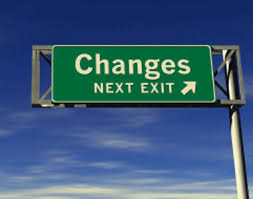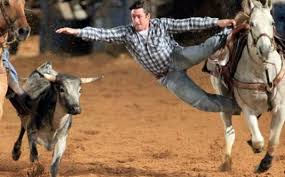By Cynthia Ray
Part of writing a story is deciding what form it will take, or what genre. Fantasy, Science Fiction, Horror, Crime, Literary, Romance, or Non-Fiction all have different audiences and different rules.
Usually, the story itself tells you how it wants to be told. As an experiment, I once wrote the same short story over in three different genres and found that there was one way that brought out the main conflicts and themes better than others—one that made the story shine.
I’ve been thinking about this because I’m stepping out of my usual genre of short fantasy fiction, to write a non-fiction book. Yes, I said non-fiction book. This will be different for me; very different. This book won’t let me go. It had nudged me for months, and now the nudges have turned to kicks-so I had to concede.
Since it is a little scary, and a stretch for me, I decided to do some research on other authors that had switched genres to see how they fared and found some interesting facts. Many authors have successfully “switched it up”. Here are just a few:
- Did you know Ian Fleming, prolific author of those iconic 007 spy novels also wrote the children’s story “Chitty-Chitty Bang Bang”? He told the story to his children and they loved it so much he wrote it down.
- Roald Dahl, author of “Charlie and the Chocolate Factory” and “James and the Giant Peach” also wrote hard-boiled crime stories. One of his more famous stories is “Lamb to the Slaughter”, in which a woman beats her husband to death with a frozen leg of lamb, then cooks the murder weapon and serves it to the policemen who comes round to question her. Yikes!
- Anne Rice, famous for her vampire novels, also wrote erotica novels early in her career, including BDSM. Apparently she was 50 shades ahead of her time.
- And E.B. White, author of “Charlottes Web” wrote the writers non-fiction classic, “Elements of Style.”
Part of my fear of stepping out and starting this new project stems from a failed attempt to write a non-fiction book. A publisher of business books once asked me to write a manual on facilitating virtual meetings. As an expert on the topic, I thought it would be easy-peasey, but writing about it turned out to be dull, boring and painful.
To my chagrin, I discovered that I didn’t want to spend all day facilitating virtual meetings, and then come home and write about the process. Needless to say, I never delivered the product and took on all the inherent guilt/shame that such an experience brings.
I’ve learned from that first foray into non-fiction. Here’s how it will be different this time:
First of all, I’ve discovered something called “Creative Non-Fiction”. This genre is exactly the kind of non-fiction I want to write. Erik Larson’s book, “Devil in the White City” is a good example of this kind writing. Lee Gutkind describes Creative Non-Fiction in his magazine by the same name.
“Creative Nonfiction, defines the genre simply, succinctly, and accurately as “true stories well told.” And that, in essence, is what creative nonfiction is all about. In some ways, creative nonfiction is like jazz—it’s a rich mix of flavors, ideas, and techniques, some of which are newly invented and others as old as writing itself. Creative nonfiction can be an essay, a journal article, a research paper, a memoir, or a poem; it can be personal or not, or it can be all of these.”
Next, the topic I’ve chosen to write about is something I am passionate about (more about that later), and have a lot of fire behind. It requires research and interviews and is something interesting enough to hold my attention for the long-haul.
And finally, I have realistic expectations of the amount of work involved and what it will take to deliver the book to paper that is in my head. Right now, I’m on fire with ideas, outlines and plans. I wake up in the middle of the night with inspiration, but I know that in only a few months I’ll be knee deep in trashed drafts wondering why I started the stupid project in the first place. I can’t wait!



Great post, Cindy. I feel a little bit the same about writing historical fiction. I’ve always wanted to do it but I’m intimidated by the amount of research required and the different approach to getting the important details on paper without clogging up the creative process. I wish you luck on your new venture!
You should go for it! It would be an interesting project. I am a fan of historical fiction. Recently, I read one about the woman pope. Did you know a woman disguised herself as a man and became pope? ITs a great story. Her pregnancy gave her away and after that the church had an “examination” of every candidate : 0
It still blows my mind that Ian Fleming wrote Chitty Chitty. I mean, I guess I can see it, given some of the themes? Haha. Anyway, good luck with your book!
Me too… I wonder what it would have been like to be Ian Flemings kid. Good storyteller. You will be commiserating with me as it goes forward, I am sure. Thanks Alexis.
I am excited to hear what your “topic” or area of passion is that will become your book. Do you write in the morning or evening?
Hi. I write whenever I can grab some time, mostly morning and afternoon on weekends or special “writing days” . My brain at night is not a pretty sight. The topic is about women in spiritual leadership, women rabbit, women ordained as catholic priests, women who lead and how that is different than men. and much more.
Double what Rob said. Can’t wait to hear what the book is about. I’ve been reading some the Fleming’s James Bond novels. Great stuff. Perhaps I should follow up with Chitty Chitty.
Thanks Matt. You wrote a non fiction book about Chess! How long did that take you to write???
Hard to say how long it took. It was a while ago now, and I wasn’t working on it full time. Couple moths for the first draft maybe, but then fact checking and editing took a while after that, and consulting with a chess master on the content. It’s a blur now.
Thanks Matthew. That still seems fast. Must have been fun.